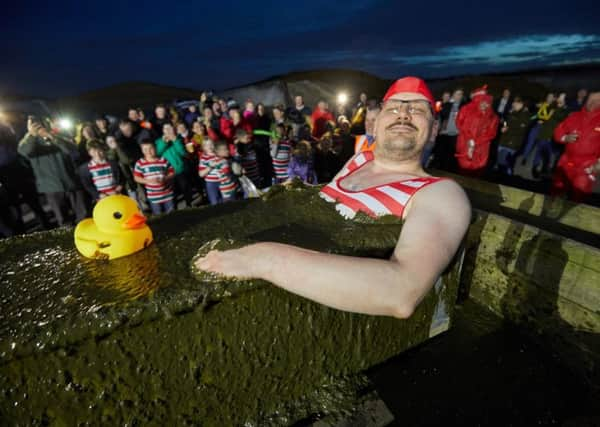Spridlington green gas pioneers create the biggest Red Nose ever


One of the domed storage tanks of the biogas plant at Grange Farm was lit up.
At 38m in diameter and 17m tall, the tank is the height and width of three double decker buses, meaning air traffic control had to be alerted before it could be illuminated.
Advertisement
Hide AdAdvertisement
Hide AdThe switch-on of this giant red nose was the highlight of a fundraising event for Red Nose Day organised by Future Biogas, the company that operates the plant.


Future Biogas’s Managing Director Philipp Lukas said: “I’ve wanted to turn a biogas tank dome into a red nose for years, and am overjoyed to have finally done it.
“The red nose was even better than I’d imagined. It was truly spectacular!”
Around 100 local people and staff members gathered for a family fun afternoon, which was held in a marquee in the plant’s grounds and included food and refreshments for all.
Advertisement
Hide AdAdvertisement
Hide AdMore than £36,000 was raised for the anti-poverty charity, thanks to donations from the company’s suppliers and business partners – as well as the local community.


Mr Lukas said: “Comic Relief makes an amazing difference to people’s lives, both here in the UK and internationally.
“This is why we wanted to pull out all the stops and raise as much money as we could.
“I’m really grateful to the local community for coming along and supporting our efforts.
“We always appreciate their goodwill and generosity.


Advertisement
Hide AdAdvertisement
Hide Ad“I’d like to thank them, as well as our fantastic suppliers and business partners, who have all so magnanimously donated to Comic Relief on our behalf.”
Mr Lukas and his management team fully embraced the Red Nose Day spirit, by dressing up in red onesies and allowing the children from the Lincoln Under-10s rugby team – which is sponsored by Future Biogas – to pelt them with digestate, the harmless goo leftover after anaerobic digestion.
Just before the grand switch on of the red nose, Mr Lukas provoked hilarity from the assembled crowd by donning a Victorian swimming costume and plunging himself in a bath brimming with digestate.
He even made sure he had a rubber duck.


Mr Lukas said: “I’m really proud of the way my team rose to the occasion and embraced the challenge I set them. I
Advertisement
Hide AdAdvertisement
Hide Ad“It’s not every day your boss asks you to be pelted with gunk for charity!
“That being said, I’m not sure I will be bathing in digestate again any time soon.
“It definitely makes more sense to spread it on your flower beds or fields as a natural fertiliser, than to dunk yourself in it.”
Usually, the tank that made the potentially record-breaking red nose is used to turn locally-grown crops and farm waste into green energy.
Advertisement
Hide AdAdvertisement
Hide AdEach year, it’s filled with around 40,000 tonnes of maize, rye and grass, which has all been grown in roughly a five-mile radius.
They are turned into energy via anaerobic digestion.
Live, natural bacteria, not dissimilar to the kind found in yoghurts and sauerkraut, is added to the crops to stimulate the fermentation that releases the gas known as biomethane.
This is then siphoned off and injected into the national grid.
As things stand, the Spridlington plant powers around four thousand homes with clean, green energy.
Advertisement
Hide AdAdvertisement
Hide AdGrange Farm Energy, which is owned by John Laing Environmental Assets, employs four staff and supports another dozen jobs locally, in terms of maintenance, engineering, farming and support services.
Its landlord is Lockwood Estates, a local farming business that also grows much of the crops that feed the tank.
Future Biogas is one of the largest producers of biogas in the UK.
Established in 2008, the company operates at the forefront of anaerobic digestion technology.
Advertisement
Hide AdAdvertisement
Hide AdIn 2013, it was the first biogas company to supply the National Grid.
Well-known for running high performing plants and stringent sustainable practice, it now operates thirteen plants across the UK, including the one at Spridlington.